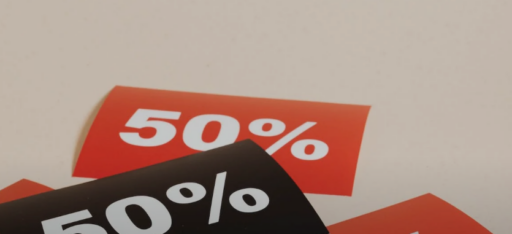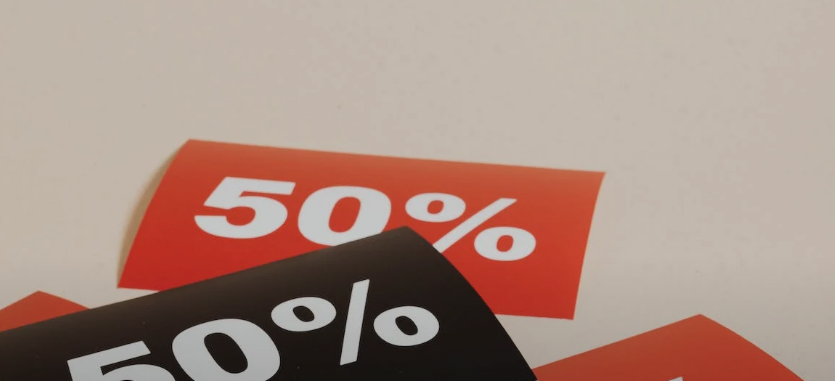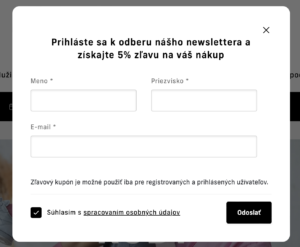Discount vouchers are a popular tool that motivates customers to buy sooner or in larger quantities. However, each eshop needs something different, which is why we program this functionality a little differently every time. An example are two well-known eshops that we manage – Tatrasvit.sk and Edsi.sk. While two types of vouchers are enough for one, the other has dozens of them. Why? This is determined by the target group as well as the marketing strategy.
Tatrasvit.sk: Offer focused on newsletter and purchase of several products
Tatrasvit.sk is a shop selling mainly socks, stockings and underwear. It’s also a relatively new eshop – it celebrated a year of operation in May. Therefore, it doesn’t yet have a permanent customer base and needs to become visible on the online market. That’s why we’ve prepared two types of vouchers for it:
The first type is a voucher for subscribing to the newsletter. Its purpose is to attract new registered customers, and therefore it’s valid only for new user accounts and allows you to get a discount only on the first purchase. This voucher is directly linked to the Mailchimp environment. In the first step, the eshop administrators generate a discount code. After subscribing to the newsletter, Mailchimp then sends this code to the given email address. When using the code on the eshop, it’s always checked whether all the conditions are met – a logged-in user, newsletter subscription and not yet redeemed coupon. If all is well, the discount will be deducted from the price of the products.
The second voucher offers a discounted price when buying 3 or more products. If it’s active, a universally applicable banner in the header of the page, for example, informs customers about the possibility of using it. The discount is divided between products and, if the admin permits, it can also be applied to several pieces of one item.
The great advantage of the voucher is that it works as a great mass motivator. However, it also performs an excellent function in cases when it’s necessary to empty some space in the warehouse, for example when the seasons are changing.
Both of these vouchers can be defined for the Czech as well as Slovak version of the eshop. Administrators can track their usage directly in the administration, giving them an overview of what type of discount is more attractive to users. To improve clarity, each voucher has a name and a code.
Plus, the system offers additional functionalities, such as the possibility of setting a minimum order price for its application, limiting its validity to a number of pieces or goods on sale, or assigning it to a specific user. The validity of the voucher is cancelled either by deleting it or by changing the status from Active to Cancelled.
“This way of managing vouchers is appreciated by the client, especially because it allows them to clearly monitor the fulfillment of their marketing goals. And if these goals are expanded or changed, the coupons are programmed in such a way that addition of other functionalities to them will be smooth and fast.”
– Zuzka, ecommerce support for Tatrasvit.sk eshop
Edsi.sk: Flexibility and wide choice of options
The established Edsi.sk eshop looks at discount vouchers differently. It uses an approach that’s more variable, flexible and fully in the hands of the administrators. They can create vouchers and then determine the limit of their validity based on date, number of products, limit of use, a specific user or maximum number of products to which the discount can be applied. At the same time, they have the option to set the voucher to a specific product, brand, category or type of user.
The discount can take 3 forms – a percentage of the purchase, a value in euros or a gift coming with the order. Store administrators also have the option to bulk create vouchers using CSV import. There are currently around 120 types active in the system.
“This way of working of gift vouchers suits the client best, because coupons offer a wide range of settings. Administrators are able to customize discounts for different customers and thus cover all their needs.”
– Mišo, ecommerce support for the eshop Edsi.sk
So how many types of vouchers are really needed?
At the beginning, the intention must be clearly defined. How are vouchers supposed to help you? Do you want more registered buyers because you’re just starting with active email marketing and need their addresses? Is it necessary to clean the warehouses? Appreciate loyal customers? Are you testing a cooperation with an influencer and you need to have an overview of how the discount code promoted by them is used? A voucher can help you achieve any of these goals.
However, it’s important to be able to set them correctly and communicate appropriately. Once they get out into the world and don’t work the way you put it in your campaign, your email inbox could literally explode with complaints. That being said, less is usually more. Thousands of discount codes “scattered” all over the Internet can seem untrustworthy and, moreover, you can easily get lost in them.










